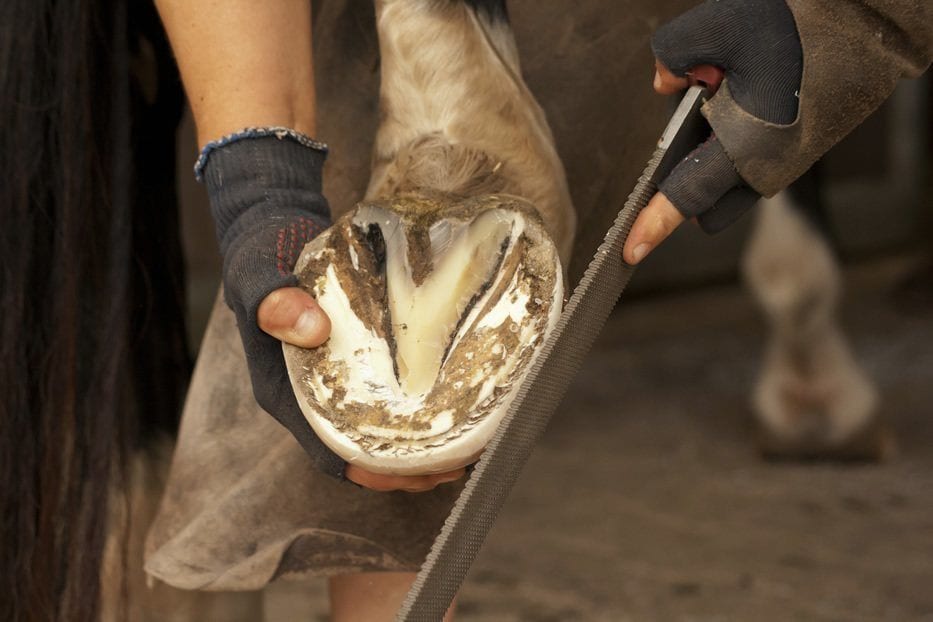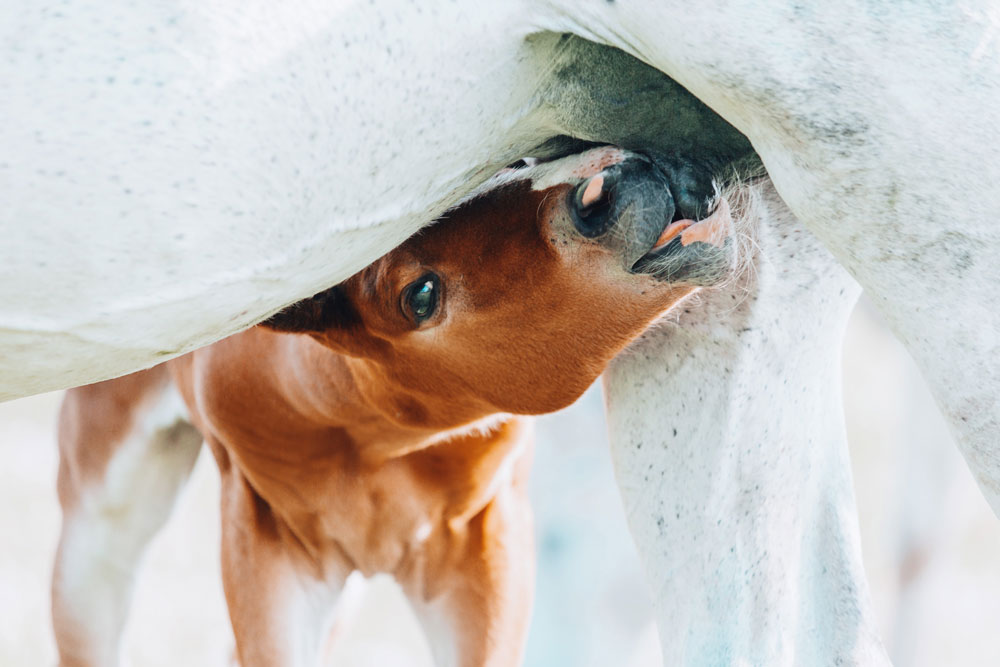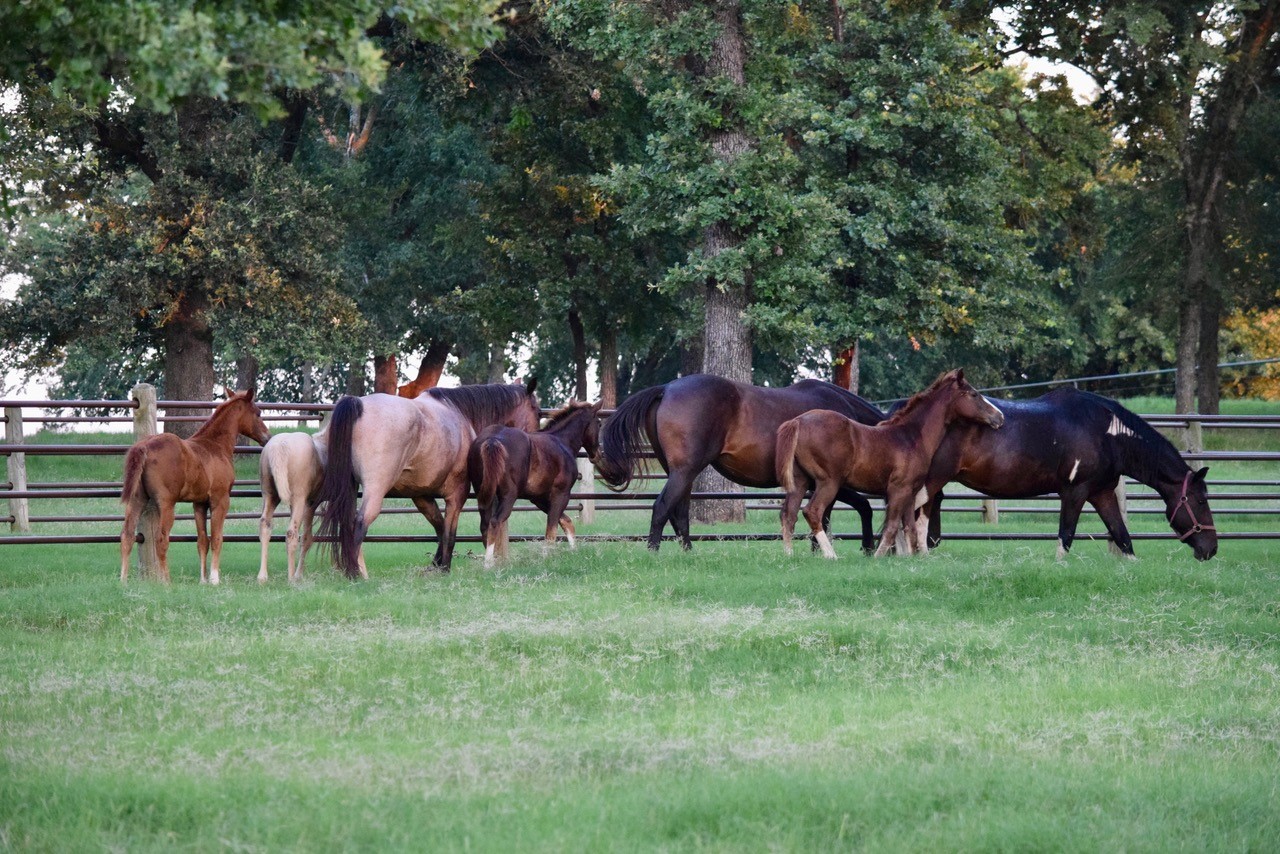Be honest: When was the last time you planned out your horse’s diet according to his hoof-care needs? If you’re like many horse owners, the answer might be “never.” After all, most of us are too busy trying to calculate caloric needs, maintain a hard keeper or an easy keeper, and feed for optimum digestive health to think much about the role nutrition plays in hoof health.
But that complex package of tissue, nerve, cartilage, bone and blood at the end of your horse’s legs can actually provide a pretty accurate snapshot of your horse’s overall health. If your horse is struggling nutritionally, odds are that his hooves will reflect it, sooner or later. And in the same token, you can help a horse with poor hooves more than you know, simply by paying attention to what he puts in his mouth. It’s not just your farrier who’s responsible for keeping your horse’s hooves healthy. You play a role too.
Main Factors that Impact Horse Hoof Health
Horses’ hooves are made up of protein and keratin (the same stuff that makes up hair). Like a horse’s hair coat, hooves will grow faster when days are longer. And while hooves may be slower than your horse’s hair coat to tell you that your horse’s overall health is suffering, sooner or later you’ll see poor nutrition reflected in cracks, chips or uneven hoof growth. It may be a subtle (and slow-moving) nutrition report, but your horse’s hooves are doing their best to say “pay attention!”
Hooves are influenced by a variety of factors. Of the five main factors — nutrition, exercise, seasonality and your farrier’s skills — the biggest wildcard is genetics. Like having a genetic predisposition to high blood pressure, there’s not a lot you can do if your horse’s hoof genetics are working against her. But the other four factors are more or less in your control.
- Your farrier: It goes without saying that the professional in charge of tending, trimming and shoeing your horse plays a key role in maintaining healthy hooves. Remember that proper hoof care is also a year-round affair — you can’t simply forget about your horse’s feet when the shoes come off for the winter.
- Seasonality: Winter and spring can be particularly tough on hooves, thanks to the ice, frozen mud and wet conditions that both seasons can bring. Both seasons can do damage to hooves in the form of bruises, chips and cracks, making poor nutrition going into the season an added danger.
- Exercise: Hooves may seem like a hard, non-living part of your horse’s body, but blood pumps through hooves and provides critical nourishment. Movement stimulates circulation, nurturing tissue and bone, so exercise is key. If your horse is prone to laminitis from insulin-related issues like Equine Metabolic Syndrome,, exercise will also help treat the insulin-resistance..
- Nutrition: A balanced, forage-first diet is key to good hoof health. Read on to find out why.
How Nutrition Affects Your Horse’s Hooves
As mentioned, the nutrition report generated by horses’ hooves can be subtle — with two main exceptions: in cases of severe malnourishment, and in cases of extreme obesity. A severely malnourished horse will direct all available calories to the basic functions of life, while an extremely obese horse may be at risk for laminitis. Laminitis occurs when the delicate folds of tissue in the hoof (laminae) that produce the hard substance of the hoof wall and keep the hoof wall attached to the underlying bone, become inflamed or damaged. Left unattended, laminitis can lead to founder,a chronic condition in which a horse’s coffin bone rotates or sinks.
Both of these scenarios are pretty hard to miss. Therefore, it’s the middle ground that most horse owners ignore. An adequate diet for hoof health is well-balanced and includes plenty of high-quality forage. It’s imperative to test your horse’s hay to assess its nutritional quality; high-quality forage naturally contains many of the following elements necessary for healthy hooves — and if it doesn’t, you need to find a way to integrate them. Here are some essentials:
- Protein to supply amino acids including methionine, cystine and cysteine.
- Vitamins including biotin, niacin (both B vitamins frequently included in hoof supplements).
- Minerals, including zinc, copper and iron.
- Fatty acids, manganese, selenium and vitamin C.
If you have tested your hay and grass and find it comes up short, many of these essential vitamins and minerals can be found in hoof supplements. However, while a hoof supplement can help your horse attain the proper balance of vitamins and nutrients for healthy hooves, it’s crucial to continue putting forage first — and to think carefully about the way in which that forage is supplied.
Many horse owners know about the danger of too much spring grass leading to laminitis. But many don’t know the root cause which has recently been found to be underlying hormonal imbalances like Metabolic Syndrome and Cushing’s Disease, both of which result in an abnormal response to the fructans in grass. Laminitis in these horses can therefore be triggered by any feed that contains high amounts of soluble carbohydrates or sugars, for example grain-based feeds. A diet high in these concentrates can also result in starch reaching the hindgut undigested, potentially leading to a state of hindgut acidosis, colonic ulceration, and even colic.
Hindgut acidosis and laminitis aren’t simply spring-time issues, though. Too much sugar and/or starch at any time of the year can lead to a similar problem. That’s why feeding grains or sweet feeds that are high in sugar or highly processed starches can be a real issue for horses. Always prioritize high-quality forage over sweet feeds. When fed a diet of high-quality forage, most horses don’t even need this starchy, sugary supplement. If you can cut it out entirely, the likelihood of your horse suffering from insulin-related laminitis are greatly reduced, while a healthier diet also means healthier hooves (and a healthier horse!)
Achieving stronger, healthier hooves for your horse is crucial. You’ve heard the expression “no hoof, no horse” — but knowing a little more about what you can do to keep your horse’s hooves healthy can go a long way in keeping them as strong as possible.




